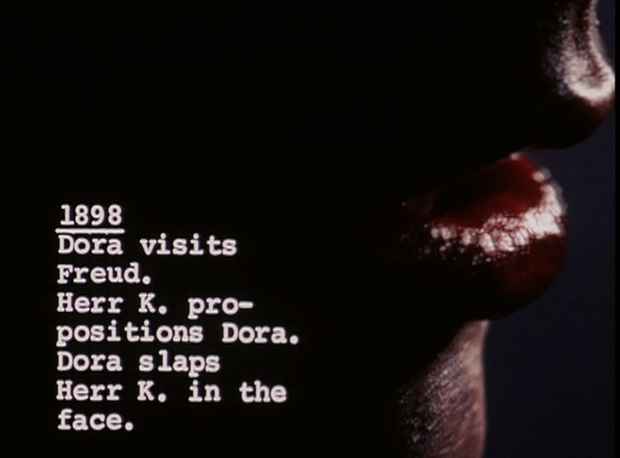"Sigmund Freud's Dora + Backcomb" Film Screening
Light Industry

This event has ended.
Sigmund Freud’s Dora: A Case of Mistaken Identity
Anthony McCall, Claire Pajaczkowska, Andrew Tyndall, and Jane Weinstock, 16mm, 1979, 40 mins.
In 1899, Sigmund Freud began treatment with an 18-year-old girl who was brought to him for analysis by her father after she had written a suicide note. Freud was eager to use this case to demonstrate the hypotheses laid out in his Interpretation of Dreams but after only three months of treatment the young woman walked out, without being cured.
Five years later Freud published an account of this failed treatment, calling it a “Fragment of an Analysis” and giving his patient the name Dora – that of a servant in his household.
Recently, Dora has been a focus for the appropriation of psychoanalysis by feminist theory. Questions about the exchange of women, the representation of female sexuality, and the marginal or contradictory position of women in language, have been discovered in her story.
But the descriptions Freud gives of Dora are not innocent documentary facts. Freud constructs her as a character in the structure of his “novellette," as a recollection of the words he remembers her having spoken, as an object of his scientific detective-work. Thus the presentation of her sexuality is also a function of these analytic and narrative processes.
The psychoanalytic method itself is a process of reading the language and symptoms of the patient; Freud’s written case history is a reading of that reading, which we in turn read.
The film, Sigmund Freud’s Dora starts from the position that these processes of representation are not only a factor in psychoanalytic texts. They exist no less in the conventions of film editing than they do in advertising; no less in the iconography of the mother than they do in pornography. - AM/CP/AT/JW, 1979
Backcomb
Sarah Pucill, 16mm, 1995, 6 mins
In Backcomb the demonic is unleashed on domestic space. It takes the form of two of femininity’s mildest tokens, hair and embroidery, that serve here in the creation of a sexualised surrealist experience. Within the claustrophobic space of a table-lay, a forceful and erectile mass of hair comes alive and slithers across its surface. The hair probes into vessels and punches through the cloth till finally order overturns and all smashes to the ground.
Introduced by Vivienne Dick
Media
Schedule
October 19, 2010 from 19:30